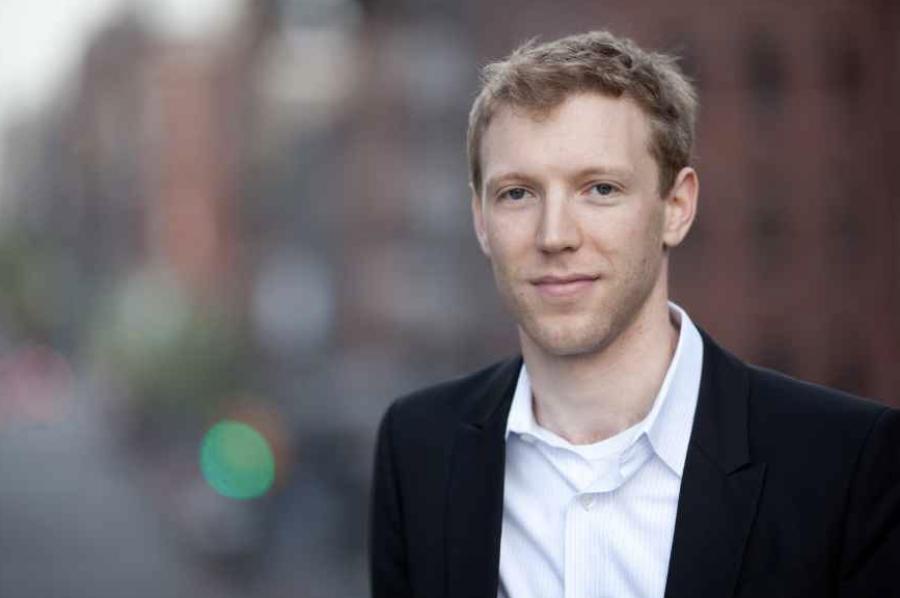Tim Cassedy (MAPH '05) is fascinated with the role language played at the turn of the 19th century, and how language served to identify and differentiate people. For his cultural study of early America, Figures of Speech: Six Histories of Language and Identity in the Age of Revolution (University of Iowa Press, 2019), Cassedy recently received the Modern Language Association’s annual First Book Award, which recognizes his contribution to linguistics, the history of the book, and the cultural history of British imperialism.
“I am interested in the way language becomes more than just a communications medium,” said Cassedy, an associate professor and director of undergraduate studies in the Department of English at Southern Methodist University. In Figures of Speech, he focuses on six characters who each placed language at the center of their identities and lived according to prescribed ideas for their era’s linguistic strictures.
Along his journey toward becoming a cultural historian, Cassedy took UChicago Deputy Dean in the Division of the Humanities Eric Slauter’s course “Enlightenment and Revolution in America,” spurring his interest in the cultural history of language and print. “Eric’s class was my first exposure to using newspapers, magazines, and popular novels to find out what people thought at the time,” Cassedy said. “I trace my work as a cultural historian of texts back to Eric’s class.”
Slauter recalled Cassedy as a standout MAPH student and reconnected with him a few years ago when an essay Cassedy wrote came up for Slauter’s review as an editor at the William and Mary Quarterly.
“The essay, documenting just how much Americans resisted the lexicographer Noah Webster’s attempts to reform the English language, was remarkable, but it didn’t prepare me for the reach and richness of Tim’s Figures of Speech,” said Slauter, also associate professor in the Department of English Language and Literature. “Figures of Speech is a study of the English language at a crucial moment in the history of its imperial expansion, peopled with a set of characters that even specialists are unlikely to know.”
In addition to including Noah Webster in Figures of Speech, the other five characters invigorate the book’s focus on linguistics and destiny. A refugee from the French Revolution developed a new way of teaching languages in Philadelphia. A plantation owner in Martinique hoped to change how pronunciation was noted on a printed page, with the help of a printer in Boston. A Scottish linguist published the first English-Hindustani dictionary in Calcutta, India. A type-maker in London spent at least 16,000 hours to create type-faces for every known language. A woman became a celebrity known as Princess Caraboo in Britain and America when she claimed to speak a language no expert could identify.
“Tim has true narrative gifts, has plotted his story well, and has discovered meaningful ways to marry the argument of his book with its formal layout, which he partially designed,” Slauter said. “He manages to make accessible, legible, and exciting an aspect of the period that was seemingly unrepresentable, even to the point of creating new fonts to help capture some of the linguistic experimentalism he studies. It is a book likely to have an impact far beyond its field, and I can attest that students in my graduate seminar on book history this term have been inspired by Tim’s work, which builds on some of the landmark works of American book history by his advisers at New York University.
“I was excited to be able to assign Figures of Speech and, since I have seen Tim face-to-face since 2007, it was a blast to have the author himself beam into the classroom by Skype to discuss his book with current UChicago graduate students, including some in MAPH. To have a former student like Tim back in the class briefly, now as a recognized expert on the syllabus, was a personal thrill.”
The members of the MLA selection committee agree with Slauter’s assessment of Cassedy’s first book and commented, “It is a rare and wonderful gift to be able to craft a scholarly argument—and there is a strong scholarly argument in this work, grounded in deep archival research—that also tells page-turning stories.”
Cassedy’s skills as a storyteller also translate into creating literary card games. His studies at UChicago likely inspired the card game “Dick” based on the novel Moby Dick by Herman Melville, which was the topic of his master’s thesis. He and a few of his students collaborated to develop “Bards Dispense Profanity,” a party game based on the works of William Shakespeare.
With one foot in literary card games and another in the literary world, Cassedy’s next project is about the case of an axe murderer in Connecticut. A Portuguese immigrant murdered an individual in 1833 and was ruled insane. Despite the ruling, the immigrant was imprisoned for the rest of his life. Legislators in Connecticut, however, would periodically discuss his case and agree that his imprisonment was wrong.
“There was no political will for an alternative, such as building a secure psychiatric hospital,” Cassedy said. “This case is remarkably current for today.”
As Cassedy advances in his career, he will continue to experiment with words and explore newspapers, magazines, and popular novels for ideas to develop into books. Based on his first book’s success, he may expand what being a cultural historian means and will likely discover new audiences for his scholarship.
By Sara S. Patterson, Director of Communications, Division of the Humanities

